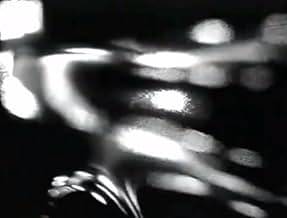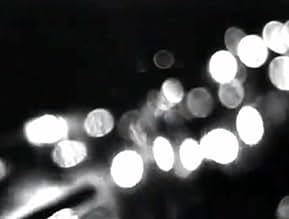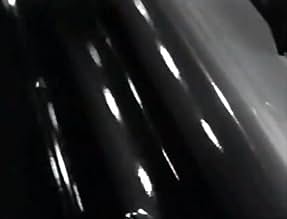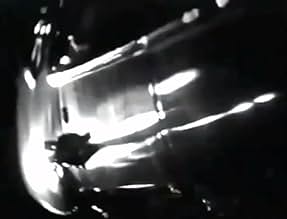It is an abstract film with no story and no actors, that graphically depicts the reflections of moving light streaks and light flashes from traffic at night.It is an abstract film with no story and no actors, that graphically depicts the reflections of moving light streaks and light flashes from traffic at night.It is an abstract film with no story and no actors, that graphically depicts the reflections of moving light streaks and light flashes from traffic at night.
- Directors
- Writers
Featured reviews
"Herbie" was one of a series of brief student films George Lucas produced when he went to film school in the 1960's, over a decade before the first Star Wars film in 1977. For the average person, these films are not particularly interesting outside of historic interest of being made by the infamous filmmaker, but for fans of independent films they have a certain primitive quality and simplicity about them that makes them intriguing. It's quite a shame that George Lucas did not go on to make more of them after he became famous; now having retired from working on the Star Wars franchise, he has alluded to creating more independent work, but whether this has become a reality is uncertain.
This one is possibly the most experimental his work became, taking on the mood of an abstract film which uses impressionistic imagery to create a unique visual style. It depicts a series of reflections of car headlights as they drive at night, blurred out so that it is also somewhat ambiguous from the start what we are looking at. Named after Herbie Hancock, who did the jazz track to the movie, the film includes a variety of interesting shots with a surreal quality to them, and the music adds a pleasant feel to the experience. It's definitely one of the better abstract films I've seen, with a very distinct style that puts it head and shoulders above many others. Not exceptional to the average moviegoer, but a talented and well-crafted abstract film, worthwhile to anyone interested in experimental cinema, as well as just simply seeing how the infamous Lucas started out.
This one is possibly the most experimental his work became, taking on the mood of an abstract film which uses impressionistic imagery to create a unique visual style. It depicts a series of reflections of car headlights as they drive at night, blurred out so that it is also somewhat ambiguous from the start what we are looking at. Named after Herbie Hancock, who did the jazz track to the movie, the film includes a variety of interesting shots with a surreal quality to them, and the music adds a pleasant feel to the experience. It's definitely one of the better abstract films I've seen, with a very distinct style that puts it head and shoulders above many others. Not exceptional to the average moviegoer, but a talented and well-crafted abstract film, worthwhile to anyone interested in experimental cinema, as well as just simply seeing how the infamous Lucas started out.
Herbie (1966)
** 1/2 (out of 4)
This three-minute short is from George Lucas and Paul Golding who made it during their 1966 year at USC Film School. It's a pretty basic short as we get a piano song from Herbie Hancock playing while we see various reflections of moving lights at night. A lot of the images are lights reflecting off of parked automobiles. Obviously there's nothing here that would make you believe that Lucas would go onto become one of the most famous names in cinema history. The short, for the most part, is entertaining as the reflections are quite nice but in the end they really don't add up to much. It should go without saying but the piano solo by Hancock is the highlight of the picture.
** 1/2 (out of 4)
This three-minute short is from George Lucas and Paul Golding who made it during their 1966 year at USC Film School. It's a pretty basic short as we get a piano song from Herbie Hancock playing while we see various reflections of moving lights at night. A lot of the images are lights reflecting off of parked automobiles. Obviously there's nothing here that would make you believe that Lucas would go onto become one of the most famous names in cinema history. The short, for the most part, is entertaining as the reflections are quite nice but in the end they really don't add up to much. It should go without saying but the piano solo by Hancock is the highlight of the picture.
This student film of Lucas from the 60's depicts a jazzy, noir mood without any plot or actors. The dancing reflections of car headlights on windshields can be viewed as the only characters in this short film. Lucas creates interesting dynamic shots with his editing skills. The visuals are in a great harmony with the accompaning music as well by the Miles Davis Quintet. It's fascinating to see an early work of a young and ambitious, soon to be famous director. Overall, it is not only an excellent audio-visual experience, but a brief showcase of Lucas' great visual editing and mood evocing skills.
Did you know
- TriviaThis film bears no relation to the Volkswagen Beetle "Herbie" films.
- Crazy creditsThese moments of reflection have been brought to you by: Paul Golding & George Lucas
- ConnectionsFeatured in Omnibus: George Lucas - Flying Solo (1997)
- SoundtracksBasin Street Blues
(uncredited)
Composed by Spencer Williams
Performed by the Miles Davis Quintet
-Trumpet: Miles Davis
-Piano: Victor Feldman
-Bass: Ron Carter
-Drums: Frank Butler
Details
- Release date
- Country of origin
- Language
- Also known as
- Херби
- See more company credits at IMDbPro
- Runtime3 minutes
- Color
- Sound mix
Contribute to this page
Suggest an edit or add missing content




















